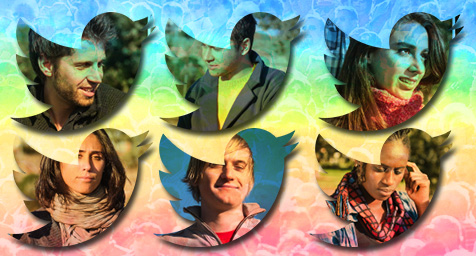The 6 Types of Social Clusters on Twitter

Are all your in-person conversations the same? Is the structure and feel duplicated with every group? Probably (hopefully) not. Most likely, how you engage changes significantly depending upon the topic and the audience.
This, of course, seems intuitive when thinking about in-person conversations. Yet, when we marketers think about social media conversations we often forget these differences. Instead, we tend to lump people together and imagine that behavior doesn’t vary too much by situation.
Thanks to recent research from the Pew Research Center’s Internet & American Life Project, it’s apparent how wrong this type of thinking is. In its analysis, the organization examined the use of words, hashtags, and URLs on Twitter and studied how the web of relationships among participants in the social media conversations evolved.
Out of this exercise came six “conversational archetypes.” What exactly are conversational archetypes? As Pew puts it: “[They are] distinctive structures of social media crowds which form depending on the subject being discussed, the information sources being cited, the social networks of the people talking about the subject, and the leaders of the conversation.”
In other words, after looking at a large number of Twitter conversations, six clearly different types of networks/groups emerged. Each of these flows in different ways and involves different types of interactions.
Here they are, in no particular order:
- Polarized Crowd: Pew found polarized discussions feature two big and dense groups that have few connections/interactions with each other. The topics being discussed are often divisive and/or political. Even if the groups are focused on the same topic, there is little crossover. The groups—for example, liberals and conservatives—don’t argue with each other, they just ignore each other. They even point to different Web resources and use different hashtags.
- Tight Crowd: These types of groups are characterized primarily by conversations among a number of highly interconnected people with few outside participants. For example, many conferences, professional topics, and hobby groups take on this structure.
- Brand Clusters: These groups occur when disconnected people comment on well-known products, services, or subjects (such as celebrities) on Twitter. These fragmented populations all tweet about the same topic but not to each other. Pew found the larger the population talking about a brand, the less likely it is that participants are connected to one another.
- Community Clusters: This structure emerges when popular topics develop multiple smaller groups, which often form around a few hubs, each with its own audience, influencers, and sources of information. These conversations have a number of separated clusters; for example, when global news stories attract coverage from many news outlets, each with its own following.
- Broadcast Network: This is the hub-and-spoke structure where Twitter commentary from well-known outlets and pundits is repeated by others. The members of the Broadcast Network audience are often connected by the initial source, and not connected to one another. That said, sometimes there are smaller groups of densely connected people (“subject groupies,” as Pew puts it) who do discuss with one another.
- Support Network: This occurs in situations when businesses tackle customer issues around their products and services. The interactions produce a hub-and-spoke structure that is different from the Broadcast Network pattern because the hub account replies to many otherwise disconnected users, creating outward spokes.
So how can these findings help marketers? From a broad perspective, they reinforce the importance of thinking about Twitter in different ways for different topics/audiences.
On a tactical level, they should be kept in mind when creating social media goals. If your audience is built around a professional topic and lends itself to a Tight Crowd structure, then perhaps Twitter success is measured by the depth and frequency of steady conversation between already connected individuals. On the other hand, if you’re targeting popular events, success may come in the form of high peaks and low valleys of engagement from unconnected people in Brand Clusters.
Keep up with what’s going on and going strong in social media. Contact MDG today at 561-338-7797 or visit www.mdgsolutions.com.
MDG is a full-service advertising agency and one of Florida’s top branding firms. With offices in Boca Raton and New York City, MDG’s core capabilities include creative, branding, logo design, print advertising, digital marketing, mobile marketing, email marketing, media planning and buying, TV and radio, outdoor advertising, newspaper, video marketing, Web design and development, content marketing, lead generation, mobile marketing, social media marketing, and SEO. To discover the latest trends in branding and advertising, contact MDG today at 561-338-7797.
